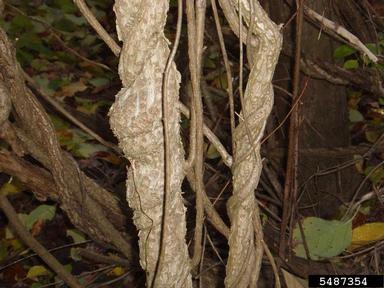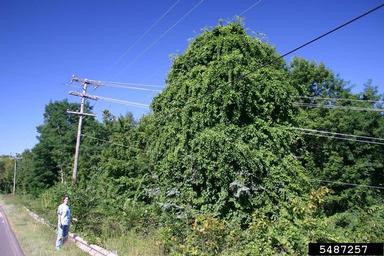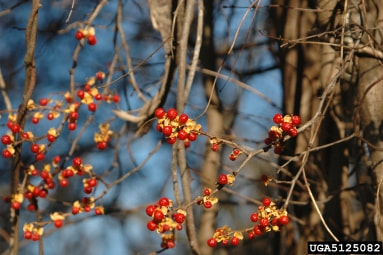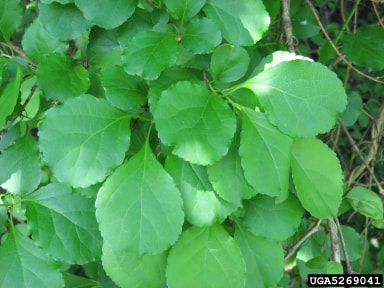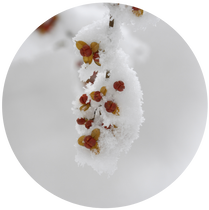|
Invasive Bittersweet
Celastrus orbiculatus Invasive bittersweet is a large, woody vine, originally from Asia - primarily China and Japan. At peak maturity, it can reach heights of 60 feet with a stem more than four inches wide. With yellow capsules that eventually reveal orange berries, it is commonly used as a decoration during the holidays. Unfortunately, this is also how it spreads. Berries are consumed by birds and wildlife and in turn, spread beyond its original planting (or display) location.
Bittersweet can easily climb shrubs and trees, preventing their access to sunlight and sometimes, even girdling them. This climbing also makes the affected trees susceptible to additional damage during storms, especially in the winter. There is a native alternative to invasive bittersweet - American bittersweet (C. scandens). It is quite difficult to tell the two vines from one another before maturity. However, after maturity, orange capsules and seeds clustered at the end of the stem rather than all along it, distinguish American bittersweet from the invasive variety. Photo credits: Leslie J. Mehrhoff, UConn, Bugwood.org | Chris Evans, University of Illinois, Bugwood.org
Learn More about Invasive Bittersweet
|
Bittersweet Facts
Management Options
|
|
Created by the Northwest Michigan Invasive Species Network
|
Go Beyond Beauty is funded by the Michigan Invasive Species Grant Program (MISGP)
|

